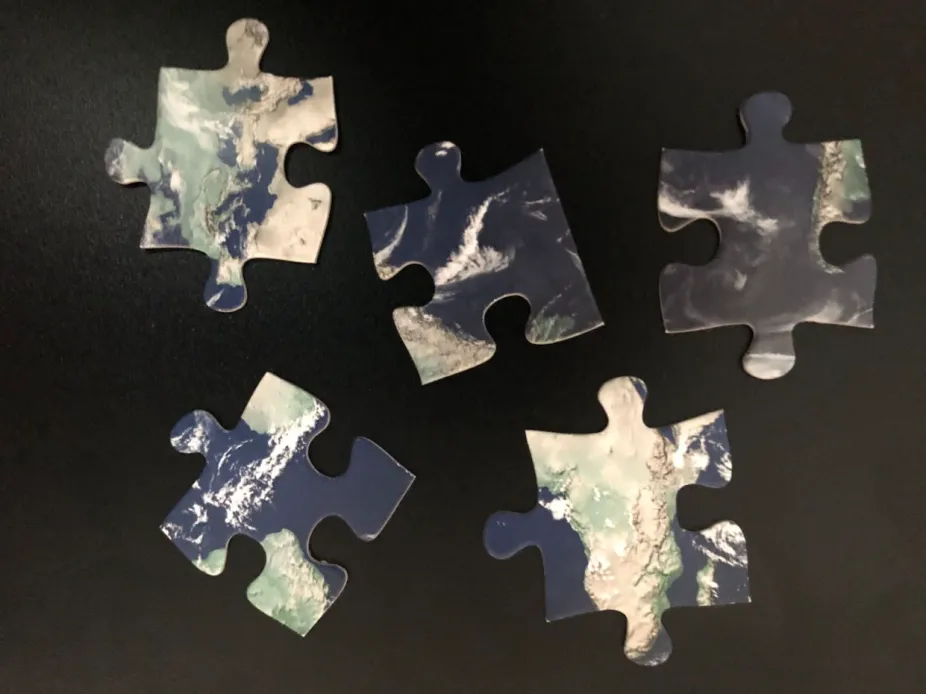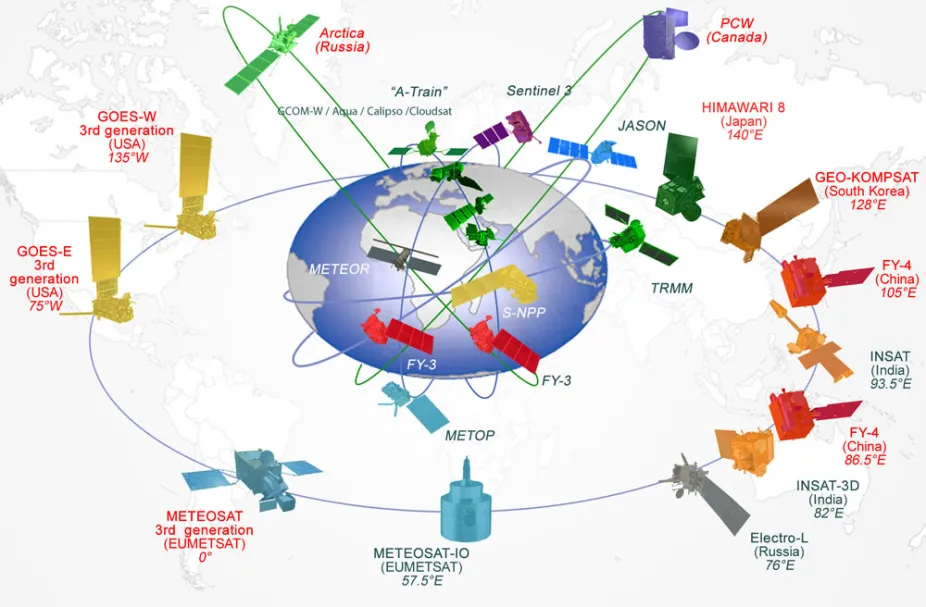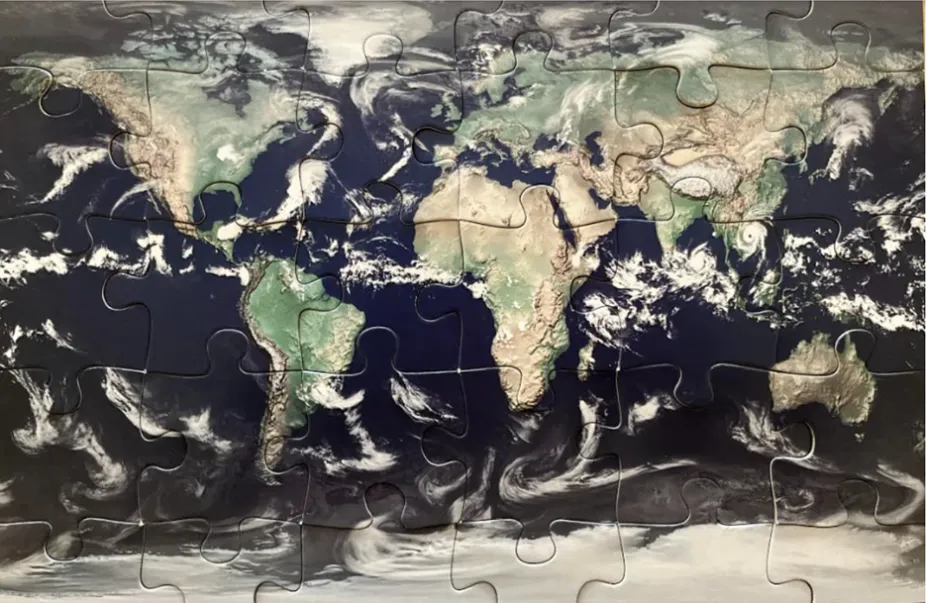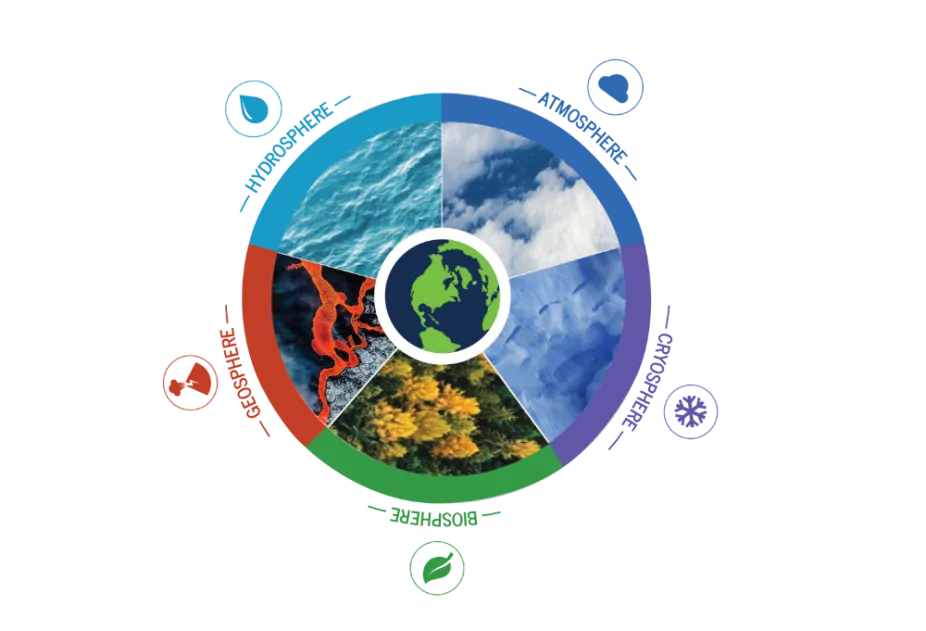The Sum of Its Parts: Earth as a System

The different parts of the Earth system are like puzzle pieces. On their own, they provide information, but we might not be able to tell how the pieces fit together.
UCAR
Imagine looking at a puzzle piece and trying to make sense of it. You might be able to make out the picture that is on it. At the very least, you can make out the colors and shapes. But imagine that you are able to fit that piece into a larger puzzle, figure out how it is connected to different shapes, and begin to understand the larger picture. Considering Earth as an integrated system instead of isolated parts, instead of as separate pieces of a puzzle, allows us to view our planet in a new way.
Observing the Earth System: From Parts to the Whole
During the 1960s, the first satellites placed in Earth’s orbit allowed us to look at the planet from a more distant perspective. Over the decades, Earth-observing satellite technology has advanced, and an entire constellation of satellites now provide views from hundreds to thousands of miles above Earth’s surface. “From space we can view the Earth as a whole system, observe the net results of complex interactions, and begin to understand how the planet is changing in response to natural and human influences,” (NASA, 2003).

The global satellite constellation provides views of our planet from orbits as high as 36,000 km (22,000 miles) above Earth’s surface.
World Meteorological Organization
Viewing Earth from afar helps scientists learn more about how the parts of the planet we observe up close - forests, clouds, the ocean, glaciers, exploding volcanoes, and eroding rocks - are all connected. With new observing systems in space as well as an increased number of high-tech sensors on land and in the ocean, we’re able to fit the pieces together to see the whole picture.

Earth-orbiting satellites provided us with the first views of the entire planet for perspective on the interconnections within the Earth system.
UCAR
Earth as a System of Interconnected Spheres

“Spheres” within the Earth system include the atmosphere, hydrosphere, biosphere, cryosphere, and geosphere.
NASA
The parts of the Earth system are often described as “spheres”: the atmosphere, biosphere, cryosphere, and geosphere. The Sun and its surrounding heliosphere are a critical part of the Earth system too, as energy from the Sun drives multiple processes affecting Earth’s atmosphere, land, and oceans.
While it is important to understand each sphere on its own, it is just as important to understand the interactions between the spheres that make up the entire Earth system. For instance, the biosphere consists of all life on the planet, including humans, as well as the components of the spheres necessary for plants, animals, and other organisms to survive. But human activities continue to alter the biosphere, which then affects other spheres, including the atmosphere, hydrosphere, and cryosphere. Changes in those parts of the Earth system can in turn directly impact the biosphere and the lives that comprise it.
Studying the Pieces, Understanding the Whole

Energy from the Sun and rainfall from the atmosphere help vegetation to flourish as part of Earth’s biosphere. Here, plants grow along an ocean coastline (hydrosphere).
Creative Commons Forest & Kim Starr
Researchers are discovering how each puzzle piece is related to the other pieces. The relationships between the puzzle pieces and the larger puzzle are interesting to people developing models of the Earth system. They hope to explain how Earth works through complex mathematical equations that help to make computational models as accurate as possible. Using these models, scientists are learning much more about interactions and feedback processes within the Earth system.
While the parts of the Earth system (air, water, land, life, and ice) interact in various ways, scientists have only recently begun viewing the picture as a whole. Despite the challenges, many areas of scientific research continue to move toward fostering understanding of the connections between different parts of the planet. Earth system science provides avenues to explore interdisciplinary science and ways to combine the natural and social sciences, arts, and culture.